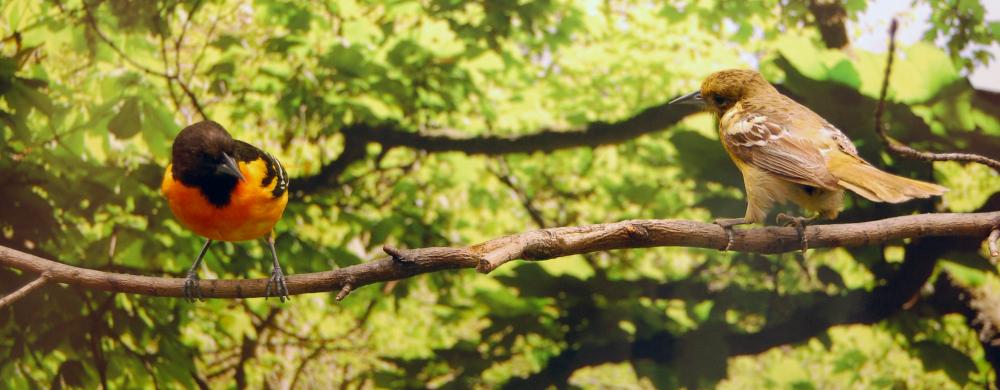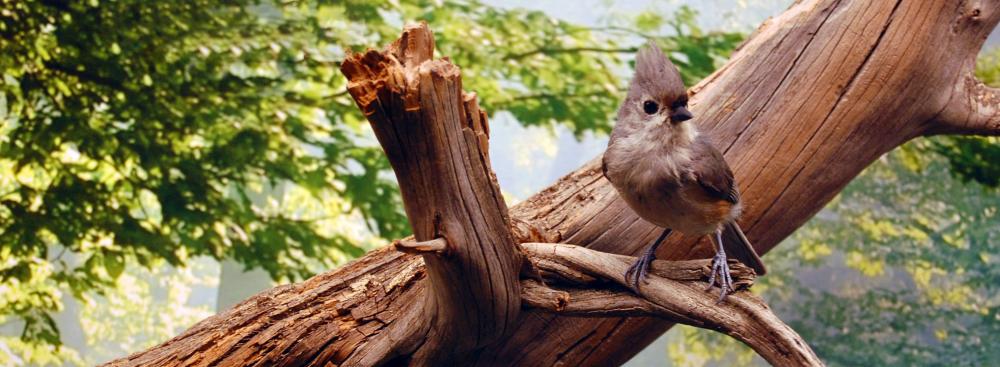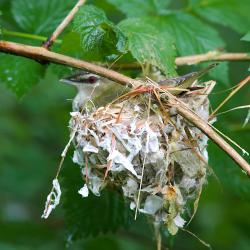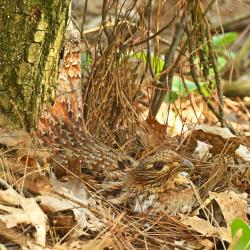
Deciduous Forests
Deciduous forests are New York’s most widespread habitat, covering about 45 percent of the land. Allegheny oak forests, maple and birch northern hardwoods, and coastal beech forests are all dominated by broad-leaved trees that shed and regrow their foliage annually, but each has its own distinctive community of resident and migratory bird species.
Almost all of New York’s cultivated land and pastures (covering another 22 percent of the state), was deciduous forest before it was cleared for agricultural use. Extensive reforestation of abandoned farmland and the establishment of forest preserves and managed “working forests” has increased the amount of forested land in New York since the 19th century.

Architectural Adaptations
Forests are complex habitats that provide birds with many options for places to build their nests. Ground-nesting birds build simple nests and rely on camouflage to protect their vulnerable eggs and fast-developing chicks from predators. Nests in tree trunk cavities provide more protection, so cavity-nesters lay plain white eggs and have very long incubation and nestling periods. Higher up in the canopy, songbirds weave cups and hanging baskets that are hard to reach and well hidden among the leaves.

Deciduous Forests in New York State
Deciduous forests cover approximately 13.8 million acres across all regions of New York, from sea level to about 3,000 feet elevation.







